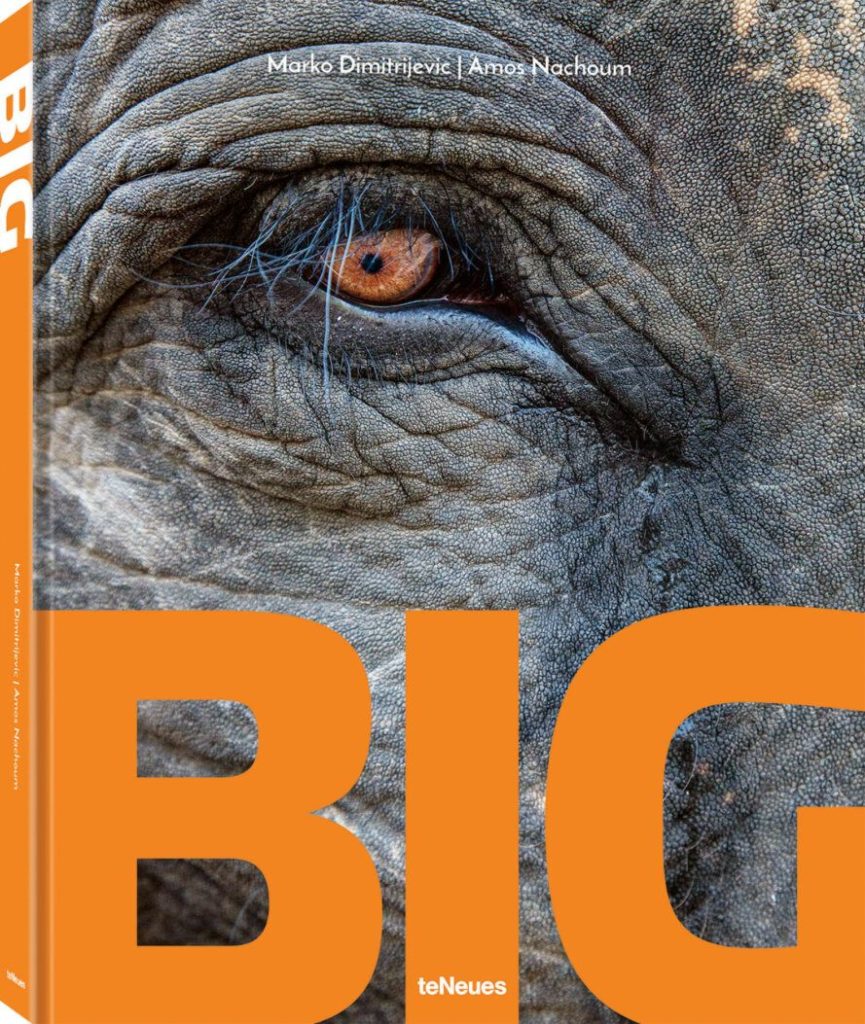
Wildlife photography book takes you on BIG armchair safari
Most of us will probably never get so close to a great white shark that we can count its double row of teeth. And one could argue that’s for the best. But animal aficionados can see sharks and bears and other giant animals up close with “BIG a photography book released in June 2022 by wildlife photographers Marko Dimitrijevic and Amos Nachoum.
Continue reading below
Our Featured Videos

This is the type of book that makes a handsome gift for any wildlife lover. But you’ll want to look at every photo before giving it away. The intimate peek into the lives of really big animals starting with the cover. Have you ever gotten such a close look at elephant eyelashes?
Related: Forest elephants do their part to slow climate change
The German teNeues Publishing Group produced this book, which is bilingual in English and German. Just like the title, it’s big and heavy — a serious work of photographic art. The composition and clarity is astounding, whether it’s a grouping of silvery fish swimming underwater or the bumpy skin texture of a marine iguana. Each photo brings its own wonder, such as the sharpness of the outstretched talons of an African fish eagle as it prepares to spear a fish.
Instead of arranging the book in a scientific or geographic way, the photographers chose to divide “BIG” into sections based on the emotions the pictures depict or evoke: awe and gratitude, respect and fear, astonishment and surprise, love and enchantment and achievement and excitement. Each section starts with a page reflecting on animals and that emotion.
The love and enchantment section is bound to be a hit with everybody in the world who buys cute animal calendars, showing scenes like a grown walrus nuzzling its calf. Those more drawn to predation won’t be disappointed. In the respect and fear section, things get a bit bloody in the lion photos. Strangely, the most terrifying photo of all is a leopard seal, its mouth open wide, about to engulf the cute little gentoo penguin it’s just drowned.
The photos are presented either with a short caption or no caption at all, letting them speak for themselves. A key at the end of the book provides information beside a thumbnail sketch of each photo, supplying the title, initials of which photographer took the shot, name of animal in English and German and the location the image was captured.

Photographer friends team up
So, who are these amazing photographers who have so exquisitely captured wildlife worldwide? Amos Nachoum was born in Israel. He got his first camera when he was 12 and grew up to photograph fashion, news stories and even wars before dedicating his career to exploring and preserving wilderness. In 1988, he created the company BigAnimals, which leads folks on customized high-end adventure trips and helps them see and photograph such animals as great white sharks, anacondas, Nile crocodiles and polar bears. He’s especially known for his underwater shots of polar bears, some of which are in “BIG.”
On the other hand, Marko Dimitrijevic grew up in Lausanne, Switzerland. A self-taught photographer, he started out as a teenager photographing forests, wildlife and people.
“Growing up, I dreamt of traveling and photographing the world,” he told Inhabitat. “Over the years, I gravitated towards nature photography focusing on endangered wildlife, marine species and ecosystems… Our first trip together was in Tonga where we were looking for humpback whales. We quickly realized that we had a similar perspective on photography and a love for big animals.” They both hoped to promote conservation through sharing their images.

Exciting moments for photographers
Both photographers’ most thrilling adventures feature water. For Dimitrijevic, it was photographing blue whales while kayaking. The largest animals on Earth can reach 100 feet in length and weigh 200 tons. Imagine that swimming under your kayak! For Nachoum, nothing beats diving with polar bears.
“As the family out of curiosity passed over my head, all three pairs of eyes were looking at me. I was five meters underwater below them. I was hypnotized, shaken, and elated, watching the family of three bears swimming away,” Nachoum said. He’s only the fifth person to dive with polar bears.
Similarly, Dimitrijevic had a memorable bear encounter in the Yukon on the Arctic Circle. He’d been watching grizzly bears from a distance.
“One day, one walked very close to us,” he said. “His face was covered in icicles, including on his eyelids. He stopped and stared at something in the distance. That bear seemed very pensive. I wondered what he was thinking about. I was bundled up with just my eyes sticking out of my layers of clothing, but our eyes met. He looked at me for what seemed to me like a long time realizing that I was not a threat. We had connected like two animals in this immense cold and white space with no other signs of animal life around us.” Dimitrijevic named that photograph “Le Penseur.”
Readers will have a hard time choosing their favorite. Some of the ones I liked best aren’t the most dangerous animals or the most difficult to photograph. I especially loved the intricate texture in the closeup of a giant Galapagos tortoise’s face. Any animal lover will enjoy an armchair safari with “BIG.”
+ “Big: A Photographic Album of the World’s Largest Animals” by Amos Nachoum and Marko Dimitrijevic
